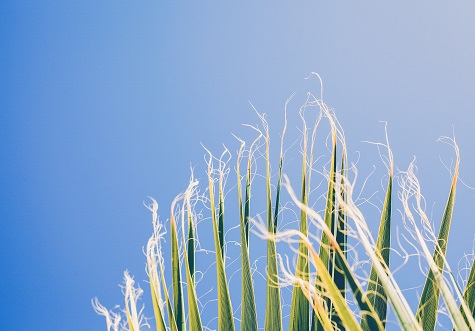In 2017, Japanese researchers surprised everyone with an interesting scientific outcome. In short, they announced next generation automobiles will be made out of trees. You heard it right! It is probably not too far if their research advances into the commercialization stage. You might be wondering how plants & automobile industry are finding common ground for sustainability.
It is not surprising that plants play a vital role in environmental conservation and carbon sequestration. However, finding a research ecosystem exploring deep insights into plant chemistry and nanofiber applications for green recovery is rare.
The advancement of molecular biology is exciting for scientists to extract nanofibers from plant cellulose and utilise them for modern green applications. This is what exactly made Japanese scientists utilise the cellulose nanofibers of wood pulp to develop automobile components that are stronger and lighter than metal.
Cellulose Nanofibers are plant-derived nanoscale fibres from cellulose molecules in biomass, hardwood, softwood, etc. Cellulose nanofibers (CNF) can be produced from plant-derived renewable resources and have the advantage of mechanical properties in lightness and strength when applied as the composites’ filler. Acetylated cellulose nanofiber-reinforced plastics (AcCNf6-RP) have been developed as substitutes for conventional structural materials (Eichhorn et al., 2010).
Since CNFs derive from various plant sources, the extraction method differs from plant to plant. However, availability, accessibility, cost-effectiveness, and superior thermomechanical properties are exciting for researchers to explore appropriate extraction methods.
Physical, chemical, and biological treatments are used for quality CNF extraction. A research paper published by the Royal Society of Chemistry, Extraction and modification of cellulose nanofibers derived from biomass for environmental application, cited the various methods.
Physical treatment involves ultra-centrifugation, high-speed homogenisation, ultra-sonication, etc., whereas chemical treatment involves alkaline exposure, acid hydrolysis, and bleaching process. In the case of the biological treatment process, enzymes such as cellulose and xylanase are used. Best results have been reported in treatments involving the combination of these treatments.
According to Vantage Market Research, The Global Nanocellulose Market is valued at USD 319.5 Million in 2021 and is projected to reach a value of USD 1063.8 Million by 2028 at a CAGR (Compound Annual Growth Rate) of 22.2% over the forecast period 2022-2028.
Another report, The Global Market for Cellulose Fibres and Cellulose Nanofibers 2023-2033: Asia Leads the Way in the Growing Sector, has envisaged a lucrative market potential for nano cellulose-based products due to their unique mechanical and chemical properties.
Applications of Cellulose Nanofibers
As Airfilters
- The growing population and rapid industrialisation impact the air quality index and lead to airborne disease.
- According to the reports released by IQAir, India stands as 8th polluted country, with an average national particulate matter pollution( PM2.5) level at 53.3
- WHO (World Health Organization) (2016) estimates 10 out of the 20 most populated cities in the world are in India.
- Lancet Commission on Pollution and Health reported Air pollution alone is responsible for approximately 9·0 million premature deaths. Air pollution (both household and ambient air pollution) remains responsible for the greatest number of deaths, causing 6·7 million deaths in 2019.
- Nanofiltration and Refined membranes are promising materials to combat indoor and outdoor pollution. Natural cellulose nanofibers are one of the promising sources of nanofiltration while compared with synthetic polymers.
- CNF nano filters are capable of nearly eliminating most sources of air pollution, including carbon monoxide, sulphur oxides, nitrogen oxides, and PM2.5-10 μm
Aerospace and automobile components
- In the year 2016, Japan’s Ministry of the Environment launched the Nano Cellulose Vehicle (NCV) project along with 22 research institutions. In autumn 2019, the project generated buzz by exhibiting a wooden concept car at the Tokyo Motor Show. Thirteen parts of the car (including the hood) were made from CNF resin, reducing the vehicle’s total weight by 16%, while a simulation showed a significant 11% improvement in fuel economy.
- Researchers believe the wide recognition and utilisation of plant cellulose nanofibers in the automobile industry to cut down CO2 emissions in the manufacturing process and increase fuel economy with the help of lighter components.
- The lightweight and superior mechanical properties of CNFs are attracting advanced research and applications in automobile, aerospace, and aviation industries.
Packaging
- Oil-based polymers occupy a majority of packaging industry applications. Packaging boxes and Packaging films play a crucial role in increasing shelf life and transportation.
- Packaging is one of the reasons for microplastic contamination in food. A research published by scientists identified for the first time that micro plastics were discovered in human blood. It is one of the signs of how plastic entered into almost all parts of our life.
- However, the global biodegradable packaging market size was estimated at USD 440 billion in 2022, and it is expected to hit around USD 814.35 billion by 2032, anticipated to reach a registered CAGR of 6.4% over the time frame 2023 to 2032. The consciousness of customers and biodegradable packaging interests are catalysing the natural, biodegradable, and healthy cellulose nanofiber industry
- Cellulose and derivatives are potential sources for commercial packaging films due to their excellent film-forming abilities. There is an increasing trend in cellulose-based biodegradable packaging applications in combination with active ingredients with antioxidant and antimicrobial properties.
Electric Vehicle(EV) industry
- The EV industry’s rapid growth demands more energy storage and safety measures. And rapid charging is one of the solutions that need of the hour to advance electric utilities further
- Microfibrillated cellulose with nanofibril networks was highlighted as a promising candidate for a lithium-ion battery separator, particularly for fast-charging applications.
- Water is detrimental to electronic devices because it easily causes short circuits. The use of sealing to prevent water permeation is considered the current conventional solution.
- Even if the cellulose nanofiber coating cracks because of external factors, the electrophoretic effect repairs the coating. This failure-containment mechanism is expected to be combined with existing waterproofing technology to dramatically improve the reliability of next-generation electronic devices under extreme operating conditions.
Construction industry
- Cement is one of the most used composite materials in the construction industry due high durability and cost economics. However, cement constructions are suffering from leakages and fractures.
- According to the research paper, Natural Cellulose Nanofibers As Sustainable Enhancers in Construction Cement, “The effects of CNFs on the mechanical properties, degree of hydration (DOH), and microstructure of cement pastes have been studied. It is found that an addition of 0.15% by weight of CNFs leads to a 15% and 20% increase in the flexural and compressive strengths of cement paste. The enhancement in mechanical strength is attributed to high DOH and dense microstructure of cement pastes after adding CNFs.”
- In the construction industry, mainly to build leakproof barrages, long-span bridges, and housing applications, CNFs are playing a significant role.
The future of the Cellulose Nanofiber Industry is fascinating with its abundance, availability of raw materials, renewability, and appropriate technologies. Farmers and the agriculture sector are some of the beneficiaries of the CNF industry. However, food security for humans and animals should be considered while strategizing CNF manufacturing on a massive scale and in industrial applications.
In India, multi-stakeholder and policy-level interventions are required to nurture the cellulose nanofiber ecosystem. For instance, prioritising the plants with quality CNF sources as one of the plants while investing in massive plantations and turning arid lands into forests.
Another important part is creating R & D facilities for innovation and commercialization of technologies. India has some premier research institutions such as CCMB in Hyderabad, National Chemical Laboratory in Pune, International Advanced Research Centre for Powder Metallurgy and New Materials (ARCI) are into polymer and material research.
However, we need more institutional support and decentralised action plans to solve local problems and grab global cellulose nanofiber opportunities. Despite the challenging climate crisis, fascinating solutions are emerging to tackle.
However, learning from past experiences that no single solution will solve all problems. It is all about utilising multiple resources for maximum outcomes. Cellulose nanofibers are one such promising resource to look into.
—————————————————————————————————————-
Sources
- https://pubs.rsc.org/en/content/articlehtml/2017/ra/c7ra06713e
- https://www.globenewswire.com/en/news-release/2023/01/30/2597432/0/en/Global-Nanocellulose-Market-Size-Share-to-Surpass-1063-8-Billion-by-2028-Vantage-Market-Research.html
- https://www.globenewswire.com/Tracker?data=j_BWWnCRIenEERHhdRdkUyOeZXiP_NP_E7swlXZyKHrJ9x9ivCkzX0Su51FMPRAyo0PfMnqI34akDW3gjphbkQd2XupSFubw2a99xj-_vj6oVVy50QjC1ibH5HEL0mRkL3l3tIA0-mVFSpuIAXLAiROVXuK8ZEtxM8lLwefYtts=
- https://www.globenewswire.com/en/news-release/2023/02/22/2612886/28124/en/The-Global-Market-for-Cellulose-Fibers-and-Cellulose-Nanofibers-2023-2033-Asia-Leads-the-Way-in-Growing-Sector.html
- https://www.iqair.com/world-most-polluted-countries
- https://www.teriin.org/article/air-pollution-india-major-issues-and-challenges#:~:text=As%20 per%20WHO%20(2016)%20 estimates,polluted%20 cities%20 are%20in%20India.
- https://www.thelancet.com/journals/lanplh/article/PIIS2542-5196(22)00090-0/fulltext
- https://www.researchgate.net/publication/371614161_Application_of_cellulose_nanofiber_as_a_promising_air_filter_for_adsorbing_particulate_matter_and_carbon_dioxide
- https://www.japan.go.jp/kizuna/2021/02/plant-derived_material.html#:~:text=Lightweight%20and%20super%2Dstrong%2C%20cellulose,at%20the%20Tokyo%20Motor%20Show.
- https://www.theguardian.com/environment/2022/mar/24/microplastics-found-in-human-blood-for-first-time#:~:text=Microplastic%20 pollution%20has%20been%20detected,and%20 may%20log%20in%20 organs.
- https://www.precedenceresearch.com/biodegradable-packaging-market#:~:text=The%20global%20 biodegradable%20 packaging%20market,time%20 frame%202023%20to%202032.
- https://www.intechopen.com/chapters/86760
- https://www.sciencedirect.com/science/article/abs/pii/S1385894721055078




